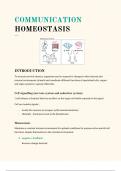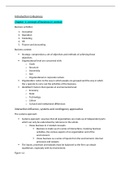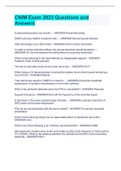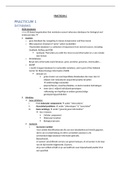Where do cities fit within the architecture of global governance? While Sustainable Development Goal 11 is
focused on making Cities inclusive, safe, resilient, and sustainable, how much say do cities have in realising
those goals? Cities are increasingly working together transnationally to address problems of global
governance that nation states are either unwilling or unable to tackle. In this class we will look in particular
at the impact of COVID 19 on cities and urban areas.
TEDX: Benjamin Barber, author of ‘If Mayors Ruled the World’, gives a TEDx talk about his
argument. https://www.youtube.com/watch?v=3BJgmV7GRVc&t=8s
Global cities start to bypass the authority/sovereignty of the States for global matters as they gain power and
influence:
- NY city has the 7th biggest army in the world (NY police department) and have their own security and
intelligence gathering unit which is scattered around the world in other international cities.
- Mayor of Copenhagen inviting a couple of hundred mayors to discuss what measures should be taken to cut
carbon emissions as the Nations didn’t want to sign agreements (as it would neglect their sovereignty rights).
For 300-400 years, states starting from the writing of their constitutions have been protecting rights, freedom,
democracy. But today it doesn’t work anymore.
What has changed? “World of Brutal Interdependence”
Independent States cannot deal with this level of interdependence on all the levels (Trade/Labor, Environment,
Health, Crime, Weapons…). We live in a world without frontiers but with 18 th century physical frontiers.
Our reality is a profonde asymmetry: Nations are super interdependent, and the world needs cooperation through
global institutions. But states are incapable of agreeing with one another as their power (built in the 18 th century) is
based on their sovereignty and nationality (which cities don’t have).
Barber proposes a new political unit to deal with this situation: the Global City.
Or more a return to it as cities are the oldest political units which existed and the original incubators for democracy.
Then they became too small progressively during the Middle Ages compare to the growing territory and population,
so the state emerged.
Democratize globalization: We should go back to them to succeed global cooperation, as Nation-States have failed at
doing so. Cities could succeed that better because they are not abstract concepts like nation-states: they are small
enough for being democratically participatory and touch people where they live, to make them feel concerned about
global politics.
Also, the local politicians like mayors or city counselors are accessible, and active in the local life. They are here to fix
the problems of the city, which give them a pragmatic bent that is suited for global governance, international
cooperation and finding compromises.
80-85% of carbon emissions come from cities. But 57 Cities also make on their own about 40% of the world’s GDP.
So, if they decide to cooperate to cut carbon emissions that might be way more efficient that what nation-states are
now doing.
And they are already taking measures. There are already hundreds of inner-cities organizations with agendas and
regular meetings to solve cross-borders problems. Mayors are already internationally organized and actives, helping,
sharing, and imitating each other to find the best practices. This is in the best interest of all, because they must find
1
,international solutions which have to be taken collaboratively to solve their local problems (e.g the rising of water).
They would now like to formalize the informal practice of international relations.
Sassen, S. (2005) ‘The Global City: Introducing a Concept’, Brown Journal of World Affairs, 11(2): 27-
43.
Shifting Geographies of Centrality
Centrality Redefined: The concept of centrality in the global economy undergoes transformation,
manifesting in various forms beyond the traditional Central Business District (The CBD is often the focal
point for economic, cultural, and social activities within a city and tends to be highly developed in terms
of infrastructure and accessibility). This includes a regional grid of nodes connected by conventional
infrastructure and a transterritorial center shaped by telematics (integration of telecommunications and
information technology).
Impact of Telematics: The emergence of a regional grid, despite the telematics revolution, indicates
a reconstitution of regions rather than the erosion of geography. Conventional infrastructure like
railways and highways remains vital, amplifying economic benefits.
Transterritorial Centers: A network of major international financial and business hubs, often
spanning across nations, exhibits increased intensity in economic transactions, reflecting emergent
regional hierarchies.
Inequality and Territorial Integration Challenges
Persistent Inequality: Contrary to expectations, new communication technologies haven't resolved
hierarchies or spatial inequalities between or within cities. Despite connectivity to global circuits
fostering development, issues of inequality persist.
Disconnection from Regions: Cities integral to the global economy often detach from their regional
contexts, challenging traditional urban system theories focusing on territorial integration.
Global Cities as Politico-Cultural Hubs
Transnational Dynamics: Major cities serve as crucial sites not just for global capital but also for
transnational labor and the formation of translocal communities and identities.
Political Engagement: While there's a prevalent sense of powerlessness at the national level,
emphasis on place suggests that global cities become arenas for political engagement, potentially
fostering new forms of power and politics at sub-national levels.
Concluding Emphases
Shifted Focus: The narrative moves away from homogenizing aspects of globalization toward
understanding the strategic, networked components within global cities.
Localized Globalization: Global cities emerge as epicenters for multiple operations—political,
economic, cultural, and subjective—where various entities, both powerful and marginalized, vie for
influence and make claims within this complex landscape.
Curtis, S. (2016) ‘Cities and Global Governance: State Failure or a New Global Order? Millennium:
Journal of International Studies, DOI: 10.1177/ 0305829816637233
International society, so long the resolution to problems of collective political order, now appears to be failing in its
capacity to deal with transnational challenges such as climate change, global security and financial instability.
Indeed, the structure of international society itself has become a significant obstacle to such pressing issues of global
2
, governance. One striking response has been the reemergence of cities as important actors on the international
stage. This article will show how these two issues are intrinsically linked. Cities have taken on new governance roles
in the gaps left by hamstrung nation-states, and their contribution to an emerging global governance architecture
will be a significant feature of the international relations of the 21st century . But do the new governance activities of
cities represent a failure on the part of states, as some scholars have argued? Or are they a part of an emerging form
of global order, in which the relationship between states, cities and other actors is being recalibrated? This article
argues that the remarkable renaissance of cities in recent decades has been a result of a shift in the structure of
international society, and assesses the causal drivers of this shift. It goes on to draw out some of the implications of
the recalibration of the relationship between the city and the state for how we understand the emerging form of
global order.
Introduction
The text discusses the emergence of the idea of a global 'parliament of mayors' proposed by Benjamin Barber as a
response to the inadequacies of states in addressing transnational governance issues like climate change. Barber
suggests that cities, thriving in their urban renaissance, could offer solutions to the nation-state's crises. This call for
municipal democratic bodies is seen as a formalization of existing city networks that collaborate voluntarily and
informally, exemplified by groups like the C40 Climate Leadership Group and Metropolis.
The narrative emphasizes the rise of global cities as a facet of a changing international society. Cities, while growing
in authority and significance, are not merely challenging states; rather, they are adapting to and shaping the
evolution of the state as part of a devolved governance strategy. The text stresses that the new urban agenda,
recognized by states in sustainable development initiatives like UN-Habitat III (the United Nations Conference on
Housing and Sustainable Urban Development that took place in Quito, Ecuador, 2016 ), highlights cities' central role.
However, this recognition often lacks substantive involvement of city leadership in the decision-making process,
indicating a residual reluctance of states to cede control.
The discussion further explores the historical neglect of cities in International Relations (IR) scholarship and the
recent shift toward acknowledging the global city phenomenon. It notes the significant increase in urban populations
and the unique characteristics of contemporary urban forms, which span national boundaries, displaying immense
vertical and horizontal growth spurred by technological advancements.
The emergence of global cities is attributed to neoliberal economic restructuring and globalization. These cities serve
as critical hubs for global economic output, innovation, and wealth convergence. The text criticizes the lack of
political analysis in early global city literature, suggesting that the emergence of global cities reflects a deeper shift in
international society, impacting political orders, state sovereignty, and identity construction.
The author argues that understanding the emergence and significance of global cities is crucial for comprehending
the changing nature of state sovereignty, territoriality, and international political order. The article proceeds to
explore the role of cities in an evolving global governance architecture, their significance in shaping international
political order, and the potential disruptions they pose to core principles of sovereignty and territoriality. Ultimately,
it suggests that cities will be central in navigating systemic contradictions and fostering novel political, social, and
economic practices in the 21st century.
Decentring Governance: Towards Global Order
The text presents a nuanced view of how cities, while gaining importance in global governance, still operate within
the framework and constraints set by the evolving international society and state structures.
Emergence of Global Governance and Order
City Integration into Global Governance: Cities are becoming integral in a global governance framework,
evolving over recent decades.
Shift in International Political Order: The traditional focus on state sovereignty has expanded to include
addressing transnational issues like climate change and global market volatility.
Transition to Complex Interdependence: There's a shift from a state-centric approach to a more
interconnected global economy, necessitating new forms of governance.
3











